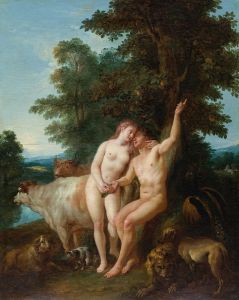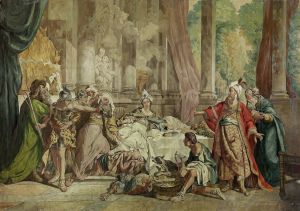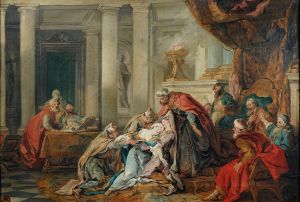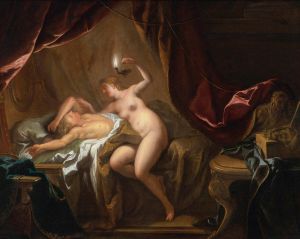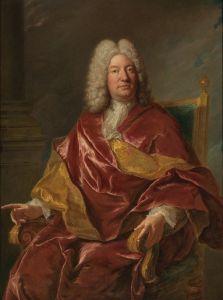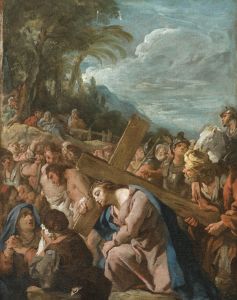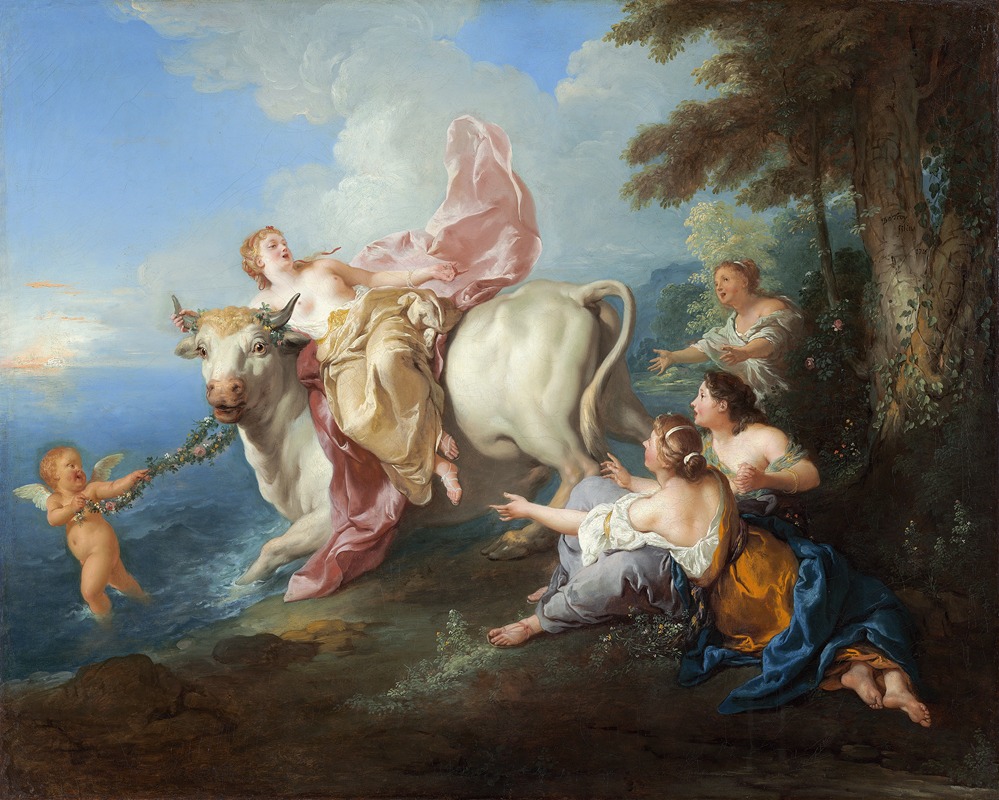
The Abduction of Europa
A hand-painted replica of Jean-François de Troy’s masterpiece The Abduction of Europa, meticulously crafted by professional artists to capture the true essence of the original. Each piece is created with museum-quality canvas and rare mineral pigments, carefully painted by experienced artists with delicate brushstrokes and rich, layered colors to perfectly recreate the texture of the original artwork. Unlike machine-printed reproductions, this hand-painted version brings the painting to life, infused with the artist’s emotions and skill in every stroke. Whether for personal collection or home decoration, it instantly elevates the artistic atmosphere of any space.
"The Abduction of Europa" is a painting by the French artist Jean-François de Troy, created in 1716. Jean-François de Troy (1679–1752) was a prominent Rococo painter known for his historical and mythological scenes, as well as his elegant depictions of contemporary life. He was a member of the prestigious Académie Royale de Peinture et de Sculpture and served as its director.
The painting depicts the mythological story of Europa, a Phoenician princess, and her abduction by Zeus, the king of the gods in Greek mythology. According to the myth, Zeus fell in love with Europa and transformed himself into a magnificent white bull to approach her. Europa, charmed by the gentle and beautiful creature, climbed onto its back. Zeus then swam across the sea, taking Europa with him to the island of Crete, where he revealed his true identity. Europa later became the first queen of Crete and bore Zeus several children, including Minos, who would become a legendary king.
In "The Abduction of Europa," de Troy captures the dramatic moment when Europa is carried away by the bull. The composition is dynamic, with a strong sense of movement as the bull strides through the water. Europa is depicted in a state of surprise and apprehension, her flowing garments and outstretched arms adding to the sense of urgency and motion. The surrounding figures, likely her companions, react with alarm and astonishment, enhancing the emotional intensity of the scene.
De Troy's use of color and light is characteristic of the Rococo style, with soft, pastel hues and delicate brushwork. The painting's background features a serene seascape, contrasting with the central action and adding depth to the composition. The artist's attention to detail is evident in the intricate rendering of the figures' expressions and the textures of their clothing.
"The Abduction of Europa" reflects the 18th-century fascination with classical mythology and the Rococo era's penchant for depicting romantic and dramatic narratives. De Troy's interpretation of the myth emphasizes the beauty and elegance of the characters while conveying the tension and excitement of the abduction.
This painting is part of the collection at the Musée des Beaux-Arts de Lyon in France. It remains an important example of Jean-François de Troy's work and a testament to his skill in blending mythological themes with the stylistic elements of the Rococo period. The artwork continues to be appreciated for its artistic merit and its portrayal of a timeless mythological tale.





